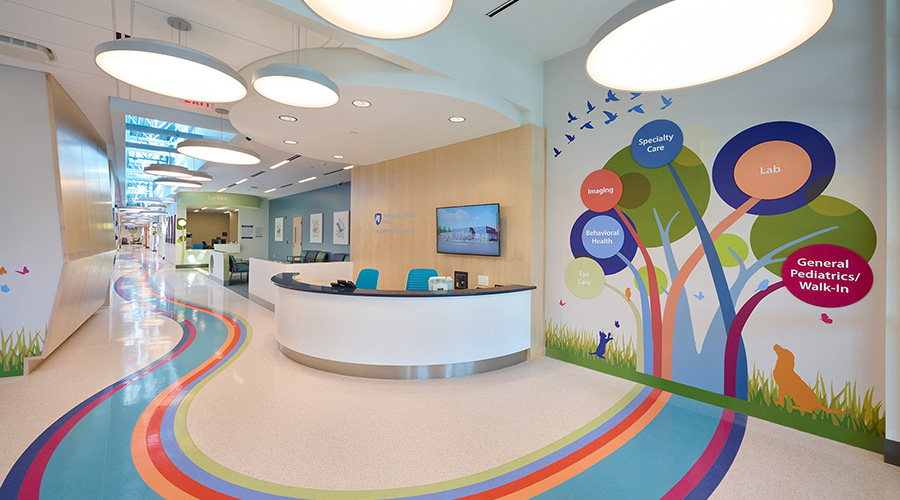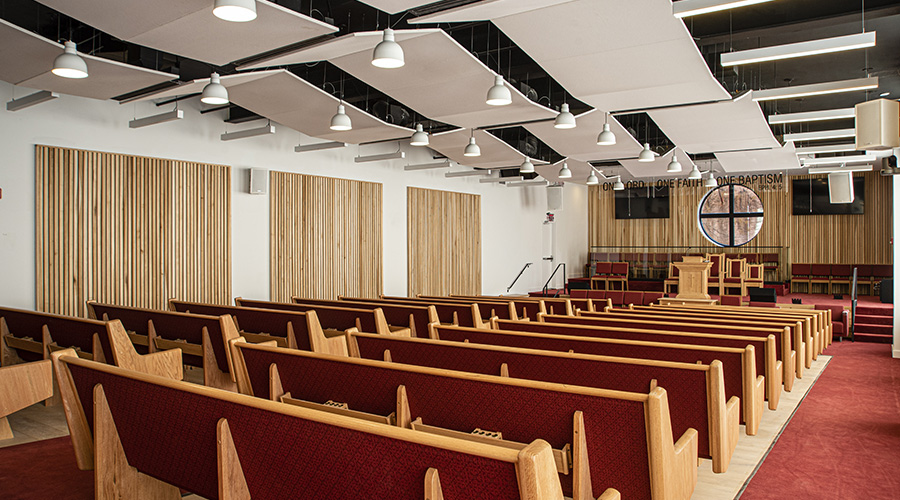A Greener Approach to Parking Design
By Scott Clein, PE, LEED AP and David Rich
When most people hear about sustainable construction, they often think of the way it’s implemented in homes or office buildings. Some of the more common approaches are high efficiency heating and cooling systems, as well as green roofs.
However, many designers and planners are also implementing “green” elements into parking structures and surface parking lots. These “green” elements can have significant impact, particularly on the quantity and quality of storm water discharging into our lakes and streams. What designers and planners are also learning is that embracing such elements is not only beneficial to the environment, but to bottom line as well.
Sustainable parking lots
A surface parking lot can require a significant amount of room to properly construct and therefore, typically can disturb a large area of native landscape. Native landscapes allow storm water to infiltrate into the ground, an action that helps replenish the ground water aquifers and helps keep our planet healthy. When such an area is paved, its ability to allow infiltration is greatly diminished (or eliminated). Since storm water doesn’t drain naturally, pollutants and sediments tend to accumulate before ultimately being released into local water supplies.
In a suburban setting these effects can be mitigated through the construction of large detention basins. This approach is not practical in denser urban areas, however, as it requires valuable land to construct. In these situations engineers turn to several other tools such as porous pavement, rain gardens, and bioswales.
Porous pavement is exactly what you would expect from the name. Rain water passes through the pavement into an underground reservoir of stone that helps filter the oil, grease, and sediments that frequently accumulates in parking lots. While the optimum solution is to allow this water to infiltrate into the ground to mimic the natural process, in some instances heavy clay soil makes it necessary for piping to ultimately discharge the water into a municipality’s system.
Similarly, rain gardens offer an alternative to tradition storm sewer systems. Designers and planners are designing landscape islands with specially engineered soils and plants to collect the runoff, and help lower nitrogen and phosphorus levels in the rainwater. As with porous pavements, the water is collected in an underground stone reservoir prior to discharge into the municipality’s system.
Bio-swales, which are vegetated storm water collection areas strategically placed around a parking lot, are another way to reduce the negative impacts of a parking lot. Water captured in the bio-swale is slowly treated in the same way a rain garden works, prior to infiltrating into the ground. This mimics the natural process and can not only increase the quality of this water, but also reduce the amount of storm water discharged into a sewer system.
Creating greener parking lots can also involve re-considering the materials traditionally used in their construction. Simple changes in approach can drastically reduce the impacts of what has become known as urban heat island effect. This is a phenomenon that causes metropolitan areas to be significantly warmer than surrounding rural areas. Urban heat island effect can lead to higher energy costs for adjacent buildings and has also been shown to significantly increase the temperature of storm water being discharged into lakes and streams, which can have a devastating effect on the ecology of these areas.
Dark pavements, such as the asphalt that is traditionally used in the development of parking lots, absorb the heat of the sun. On a hot summer day you can see this heat radiating off of the pavement, where it is then transferred back into the air or directly into storm water. Lighter pavements, such as white concrete, do not absorb the heat of the sun at nearly the same rate. Therefore, they don’t contribute to urban heat island effect like darker pavements.
Parking structures
It’s also possible to build parking structures that can have a positive impact upon the environment. For starters, parking designers and planners can use materials such as precast, recycled concrete or concrete containing recovered materials. All concrete areas can be cured with low volatile organic compounds and all painted surfaces can be covered with paints that contain low levels of VOCs.
There are also several design strategies that be used to make parking structures environmentally friendly. For instance, rather than providing an open parking floor on the structure’s roof, designers can create a “living roof”—composed of trees, grass, and other vegetation—which can help reduce urban heat island effect, as well as stormwater runoff.
Other “green” design strategies involve pay-on-foot technology and entry/exit strategies to meet peak traffic demands, which can both reduce the number of idling vehicles in a garage. When cars sit waiting to enter or leave a parking structure, they unnecessarily emit carbon monoxide into the environment. The Department of Environmental Protection has found that idling vehicles emit 20 times more pollution than those traveling at 30 mph.
Pay-on-foot technologies allow patrons to pay for parking before they get into their cars to leave, which keeps them from having to wait in long lines to leave the structure. Meanwhile, entry/exit strategies can include reversible lanes, which are used as entrances during peak entry times and then changed over to exits during common departure times. Both of these approaches can facilitate quick exiting and minimize the amount of time patrons spend queuing in running vehicles.
Also, another popular design element is to create facades with large openings to let in natural light, which reduces the need for round-the-clock interior lighting. Other elements that can reduce the need for electrical lighting include a light core running from the roof to the bottom level, which serves as the primary source of day lighting, and precast window openings.
Positive effects
In terms of implementing “green” initiatives, the parking industry is keeping pace with other sectors of the construction industry. There are many elements one can implement to make a parking lot more sustainable and better for the environment. And once implemented, both parking designer/planner and automobile user alike will certainly take notice of the positive effects these “green” features create.
Scott Clein, PE, LEED AP, is an associate with Giffels-Webster Engineers, Inc. Headquartered in Detroit, Giffels-Webster Engineers is a civil engineering and surveying firm specializing in serving public, private, and institutional clients with their infrastructure needs. The firm can be found online at www.giffelswebster.com.
David Rich is director of Business Development at Rich and Associates, the oldest firm in North America dedicated solely to parking design and planning. Rich and Associates, headquartered in Southfield, Mich., is the oldest firm in North America dedicated solely to parking design and planning. The firm can be found online at www.richassoc.com.
Related Topics:











